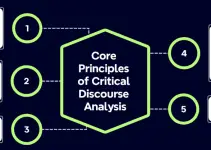Table of Contents
Curriculum Engine: A New Approach to Curriculum Development
The disruptive introduction of ChatGPT in November 2022 ushered in an era of artificial intelligence that change the way we do things nowadays. Early adopters of its Application Programming Interface or API led to the development of various products that have amazing functionalities.
The educational sector is one of those hardly hit by this technological development, bringing with it a lot of positive and negative externalities that need to be addressed. Nevertheless, as with any disruptive technology, no one can stop it from progressing as people are imaginative, creative, and business-minded. Instead of being apprehensive, many enterprising individuals and companies leverage Large Language Models or LLM such as ChatGPT and its cohorts, to make routine work more efficient and effective.
In educational technology, AI-based curriculum engine has come into being. In the past, it will take a lot of time and effort to design a curriculum that matches the needs of the students. But with AI now gaining momentum and pervading the lives of students and teachers, there is no other way to cope with the changing needs of students in the 21st century but to adapt and survive.
Now let’s see how a curriculum engine powered by software can assist in students’ learning.
Definition of Curriculum Engine
A curriculum engine, in educational technology, refers to a software-based system that is specifically designed to streamline educational curricula. It serves as a centralized platform that allows educators to create, organize, and manage curriculum materials effectively. By leveraging the power of technology, educators can use a curriculum engine to revolutionize the way they develop, deliver, and assess educational content.
A curriculum engine refers to a software-based system that is specifically designed to streamline educational curricula.
The primary purpose of a curriculum engine is to provide educators with a structured framework for curriculum development. It offers educators a range of tools and features that make it easy to create and modify lesson plans, assessments, learning resources, to come up with a more creative curriculum. This centralized approach saves educators valuable time and effort, as they no longer have to search for or create curriculum materials from scratch.
Furthermore, a curriculum engine enhances collaboration among educators. It provides a platform for educators to share and exchange curriculum resources, fostering a community of practice. This collaborative aspect enables educators to learn from one another, exchange best practices, and continually enhance their teaching strategies or techniques.
Additionally, a curriculum engine promotes consistency and alignment in educational practices. Additionally, a curriculum engine ensures that educational standards and objectives are aligned with curriculum materials, providing a cohesive learning experience for students. This alignment helps to ensure that students receive a high-quality education that is relevant and meets their needs.
4 Key Features of a Curriculum Engine and Their Impacts

The key features of a curriculum engine are pivotal in simplifying educational curricula and enhancing the teaching and learning process. These features meet the specific needs of educators and provide them with the tools necessary to create, organize, and manage curriculum materials effectively.
By leveraging the power of technology, a curriculum engine revolutionizes the way educational content is developed, delivered, and assessed.
In this section, we will explore four key features of a curriculum engine and their purposes.
1. Modifies lesson plans easily and quickly
One of the key features of a curriculum engine is the ability to create and modify lesson plans. Educators can easily develop comprehensive lesson plans that align with educational standards and objectives. This feature allows for the integration of various teaching strategies, learning activities, and assessment methods, ensuring a well-rounded and engaging learning experience for students.
By providing a structured framework for lesson planning, a curriculum engine saves educators valuable time and effort, enabling them to focus more on instructional delivery and student engagement.
2. Develops and manages assessments
Another important feature of a curriculum engine is the capability to develop and manage assessments. Educators can create a wide range of assessments, including quizzes, tests, projects, and performance tasks. It can align these assessments with learning objectives and standards, providing educators with valuable insights into student progress and mastery of content.
The ability to track and analyze assessment data allows educators to make data-driven decisions and tailor instruction to meet individual student needs. This feature promotes personalized learning and ensures that students receive the support and resources they need to succeed.
3. Facilitates collaboration
Collaboration is a key aspect of effective curriculum development, and a curriculum engine facilitates collaboration among educators. The platform provides a space for educators to share and exchange curriculum resources, lesson plans, and best practices.
This collaborative feature fosters a community of practice, where educators can learn from each other, share innovative ideas , and continuously improve their teaching methods. By leveraging the collective expertise of a community, educators can enhance the quality of their curriculum materials and provide students with a more enriching learning experience.
4. Offers a centralized repository of learning resources
A curriculum engine also offers a centralized repository for learning resources. Educators can access a wide range of digital resources, including textbooks, videos, interactive simulations, and online articles. This feature ensures that educators have access to up-to-date and relevant resources that support their instructional goals.
Students can also benefit from this feature by accessing these resources to supplement their learning and explore topics in more depth. The availability of a centralized repository promotes equity in education, as all students have access to the same high-quality resources regardless of their location or socioeconomic background.
Conclusion
The curriculum engine is a powerful software-based system that has revolutionized the educational system. By leveraging AI technology and providing educators with the tools, it enhances curriculum alignment, promotes personalized learning, facilitates collaboration among educators, and offers a centralized repository of learning resources. These advantages have a significant impact on the teaching and learning experience.
The curriculum engine ensures that the content taught in the classroom is relevant, up-to-date, and aligned with educational standards and objectives. This not only provides students with a high-quality education but also gives educators a clear roadmap for instruction.
The curriculum engine is a game-changer in education. It empowers educators to deliver a relevant and engaging education, meets the diverse needs of students, and promotes equity in access to educational resources.
With its numerous advantages and significant impact, the curriculum engine is essential for streamlining educational curricula and improving the overall teaching and learning experience.



